Trailblazing artists: some late, all great
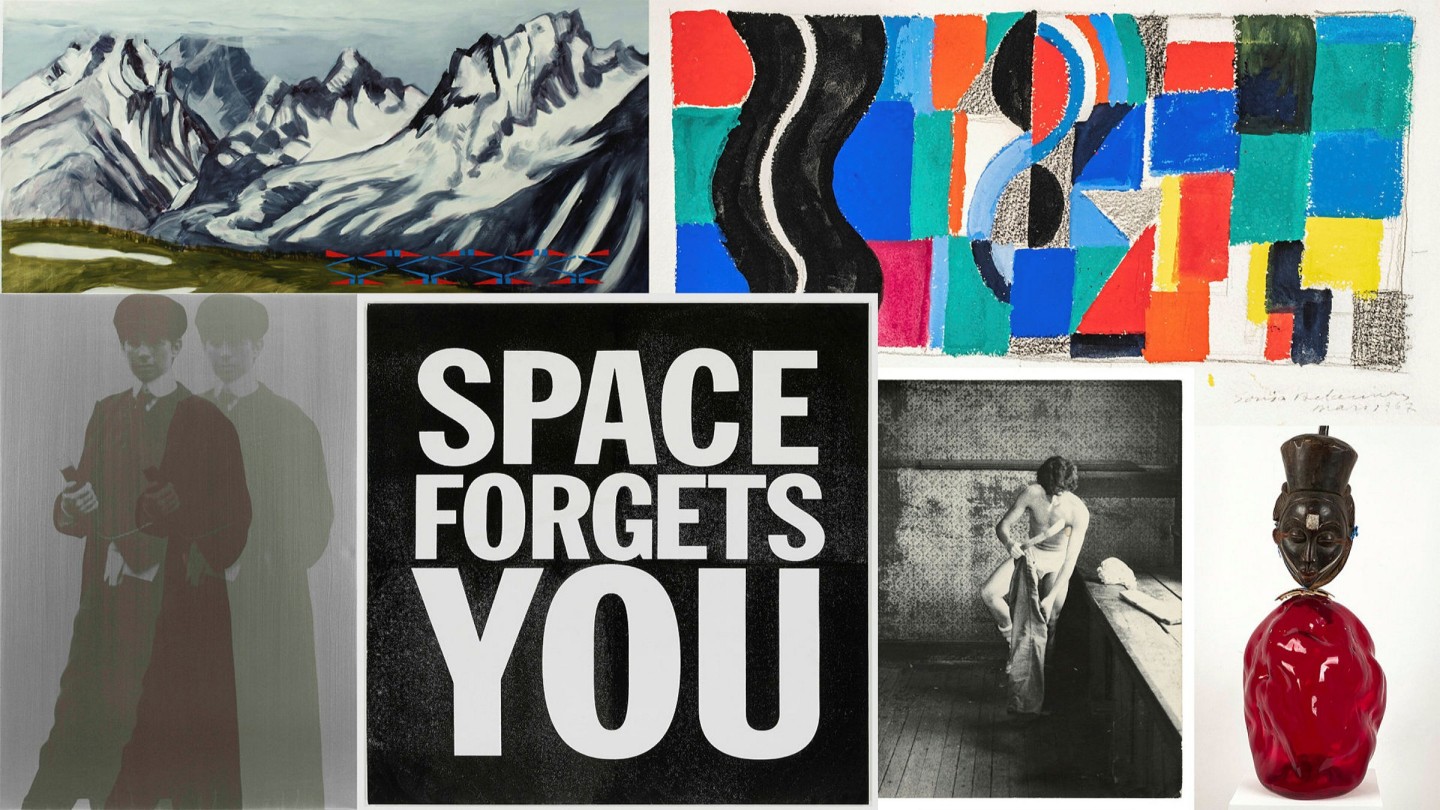
Roula Khalaf, Editor of the FT, selects her favourite stories in this weekly newsletter.
Galerie Buchholz (Cologne, Berlin and New York)
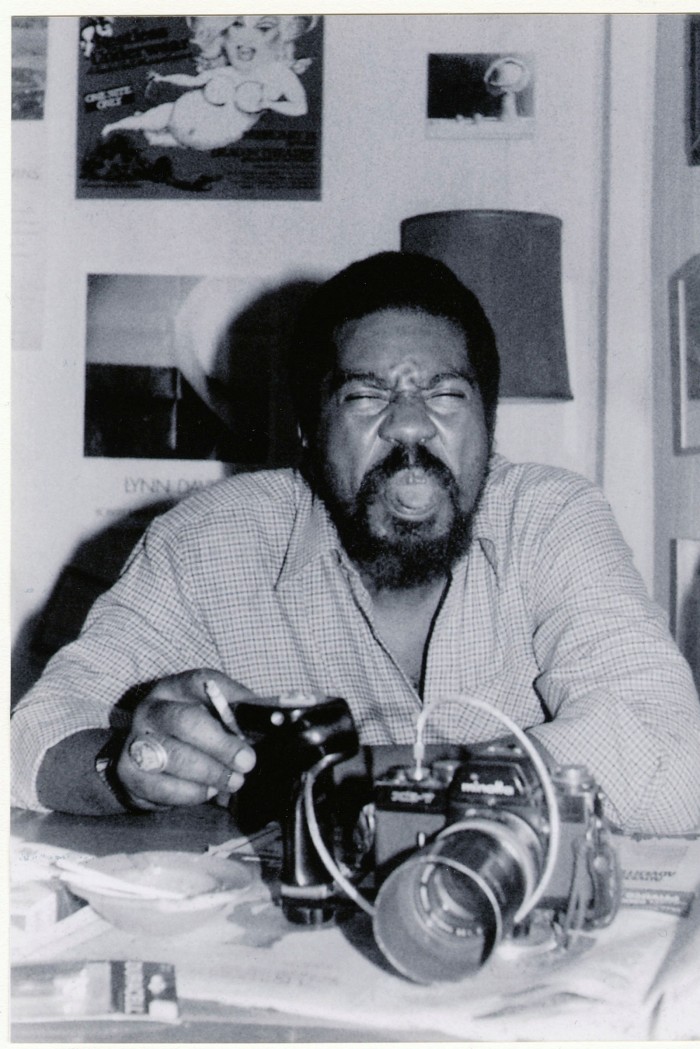
The photographs of Bronx-born Alvin Baltrop, who died in 2004, remained largely out of sight during the artist’s lifetime. “A working-class African American, many of whose photographs are sexually explicit, Baltrop encountered only rejection,” wrote the late critic Douglas Crimp. But his 1970s images, showing gay men engaging in clandestine sex on Manhattan’s West Side piers, have come to light in recent shows at the Bronx Museum of the Arts (2019) and the Reina Sofía in Madrid (2010).
“Alvin was overlooked by the New York gallery system during his life and even after his death,” says Sergio Bessa, director of curatorial and educational programmes at the Bronx Museum of the Arts. Baltrop’s works are now surfacing on the market, with a selection of his vintage silver gelatin prints, hand-printed by Baltrop himself, available on the Art Basel OVR: Pioneers platform through Galerie Buchholz. Each of the unique works, including “The Piers (man wearing jockstrap)”, (undated, 1975-86), are priced at $15,000 each.
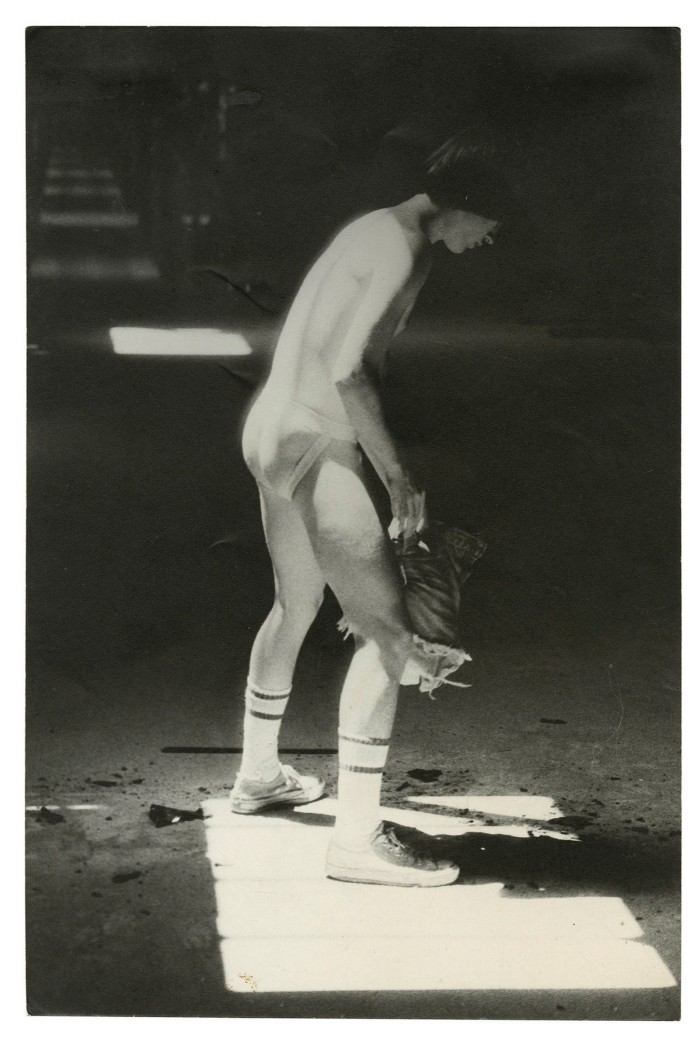
Crimp wrote eloquently about Baltrop’s accomplishments, noting that his pier photographs constitute a significant record of a lost era of New York industrial landscape and gay culture pre-Aids. “There is truth in that view,” he observed, “but it suggests that Baltrop’s project was essentially documentary in nature, whereas the intimacy of the pictures, their studied compositions, their attention to the play of light and shadow testify to a wider ambition.”
Galerie Zlotowski (Paris)
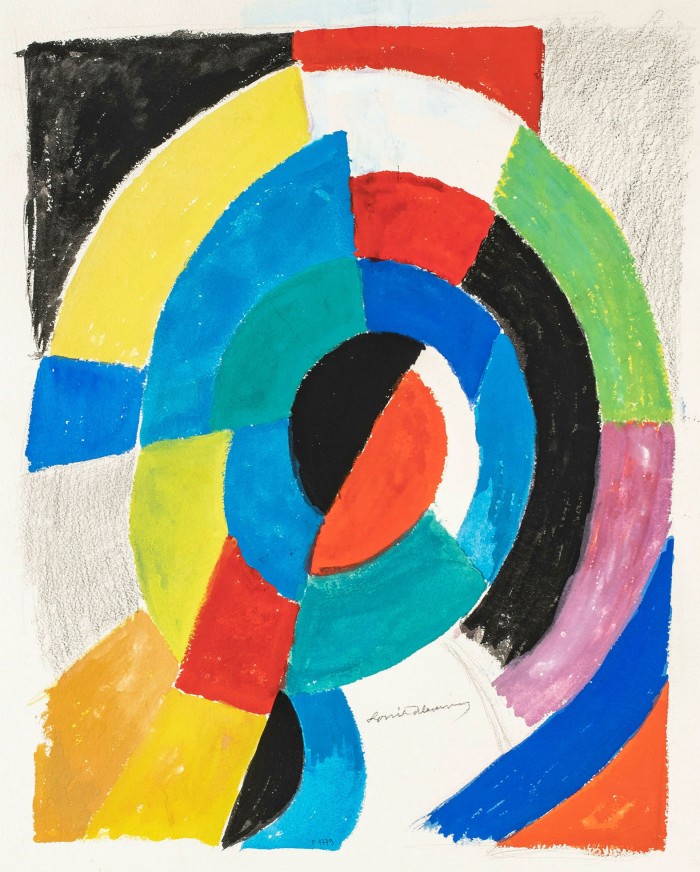
Yves Zlotowski, director of Galerie Zlotowski, is evangelical about Sonia Delaunay, a key member of the early 20th-century Parisian avant-garde who remains overshadowed by her husband, artist Robert Delaunay. “Sonia Delaunay was a pioneer of abstraction. She started to turn away from figuration as early as 1911; she consistently conceived, developed and imposed a pictorial language based on rhythmic colours,” says Zlotowski.
Her fluid colour patterns proliferate in eight works on paper, dating from 1914 to 1971: these include the 1914 work “Les Rochers de Montreux” (price points range from €70,000 to €160,000). The rare works, all drawn from French, Italian and Swiss private collections, exemplify the Delaunays’ post-Cubist theory of simultanism, creating depth and rhythm through contrasting colour planes.
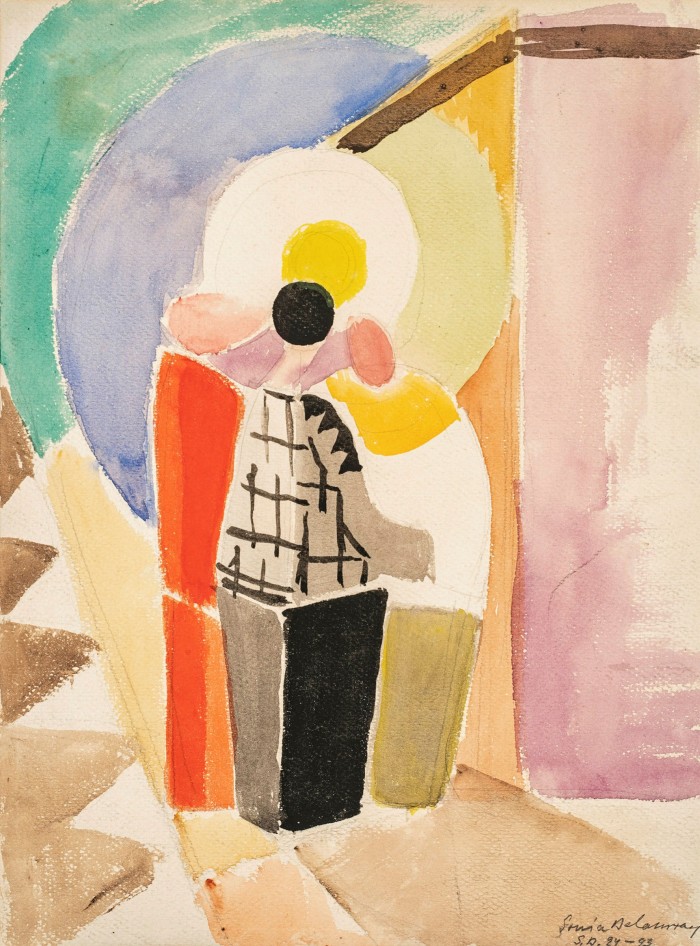
Zlotowski stresses that Sonia Delaunay, and other trailblazing women creatives, are still losing out. “We need to reconsider a gender-biased view of art history. Sonia Delaunay rejected the established hierarchy between applied and visual arts, considering ‘craftsmanship’ as the ‘métier’ [main characteristic] of simultanism. Fashion, advertisement and furniture design were ways to extend her practice, not to diminish it,” he says.
Kavi Gupta (Chicago)
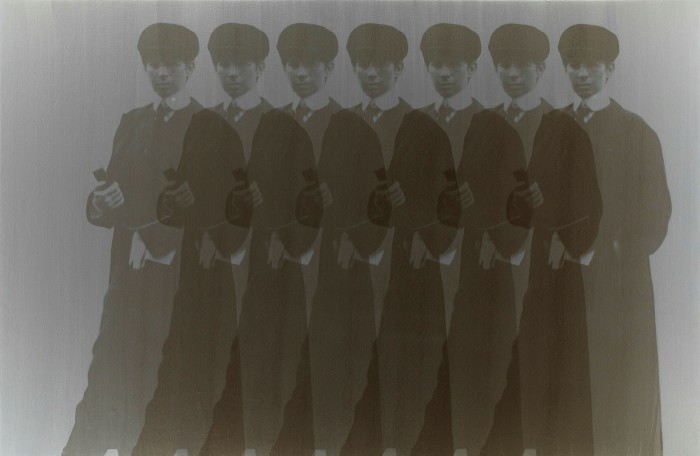
For a dose of irreverence and wit, look no further than the works of US artist Deborah Kass, all drawn from her Warhol Project series dating from the 1990s. “Kass intently studied Warhol’s methods and his various bodies of work in order to reference them as recognisably as possible. She then subverted Warhol’s content, inserting images that directly confront the issue of lack of representation,” says a spokesman for Kavi Gupta gallery.
A highlight is a comical, captivating image of Barbra Streisand in the film Yentl emulating Warhol’s images of Elvis (“Seven Ghost Yentls (My Elvis)”, 1997). “We continue though with two pieces paying tribute to US novelist Gertrude Stein — emulating Warhol’s images of Rauschenberg — and a piece featuring original photography of the contemporary dance choreographer Elizabeth Streb, echoing Warhol’s images of Merce Cunningham,” he adds. Prices are undisclosed but “generally start in the low six-figure range”, the spokesman says.
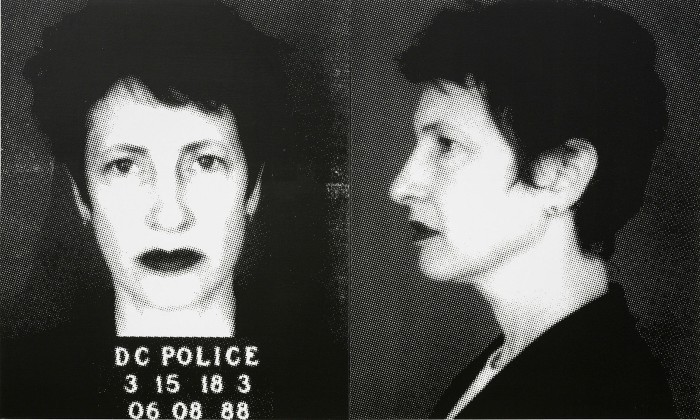
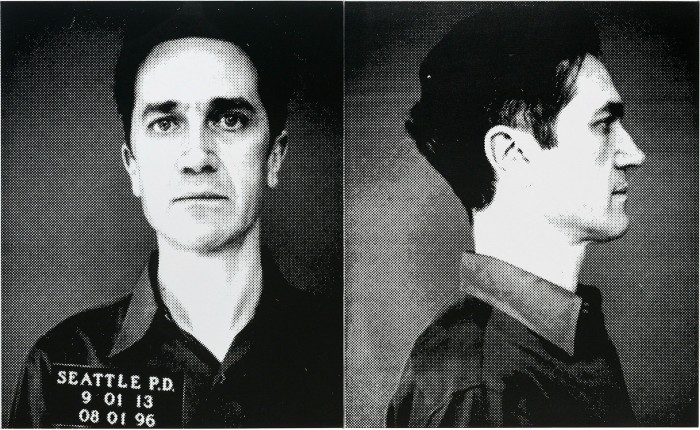
Warhol’s “Most Wanted” series is also transformed through Kass’s gaze. The original Warhol series (1964) featured NYPD photographs of criminals; in the late 1990s, Kass replaced those images with staged “mugshots” of art world luminaries such as the curators Thelma Golden and Robert Storr.
“Kass pioneered a uniquely confident aesthetic voice — one that is intertextual and informed, with sardonic wit — and has consistently used that voice to constructively undermine the antagonists of equity,” argues the gallery spokesman, who points out that she has a “cult following [which is] loyal but smaller than it should be”.
Morán Morán (Los Angeles)
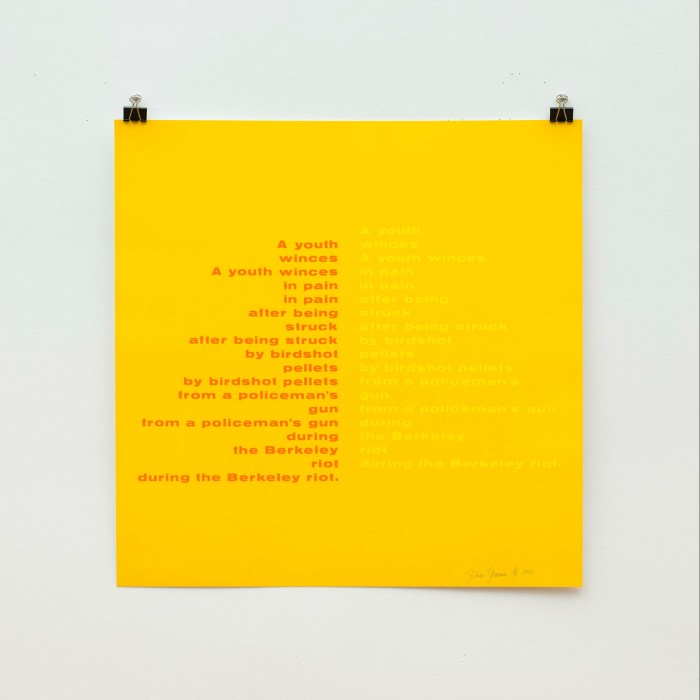

One of John Giorno’s most innovative projects was “Dial-A-Poem”, shown at the Museum of Modern Art in New York in the 1970 exhibition Information, whereby people could ring a phone number and hear poetry by writers such as Anne Waldman and John Ashbery, as well as civil rights speeches (the number, incidentally, was also listed in The New York Times).
Giorno died in October 2019, and was “ahead of his time in terms of implementing technology as media for fine art”, says David Daniels of Morán Morán gallery, making him “a great choice for the Art Basel OVR: Pioneers, given the emphasis on boundary-pushing artists”. A selection of paintings and silkscreens on paper by Giorno priced between $7,000 and $45,000 are available including “A Youth Winces” (1971) and “Bad News is Always True” (2015).
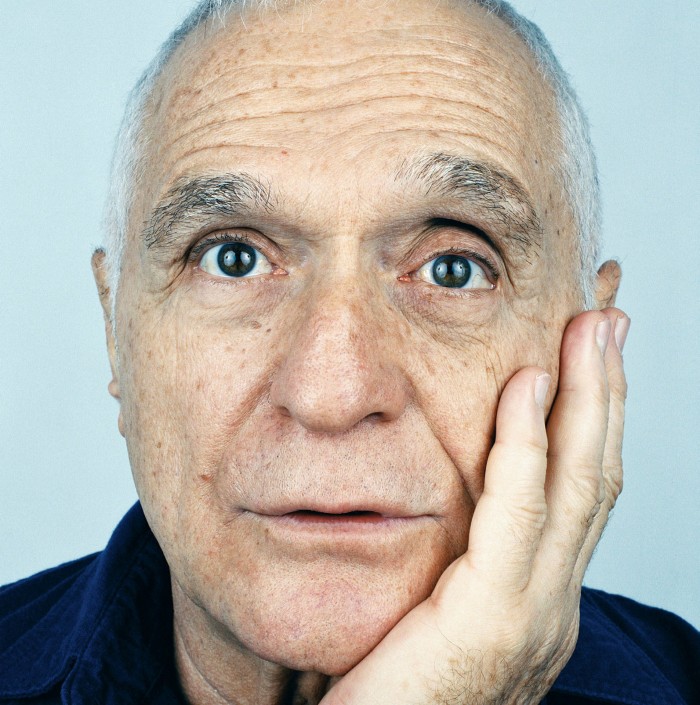
“In terms of the market, there is a growing demand for his work; interest has only increased since his death in 2019, when he was enjoying a renaissance beyond his established status in art history. We see the continued growth of a late-blooming market catching up with a strong critical and curatorial reputation,” says Daniels. Giorno’s works will be paired on the OVR with pieces by the late US artist Dash Snow, recontextualising the art of both; a series of Giorno’s audio tracks will also be available.
Hales Gallery (London and New York)
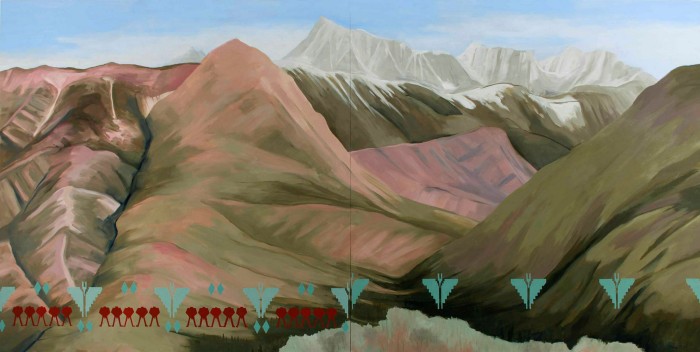
Kay WalkingStick, an artist of the Cherokee Nation of Oklahoma with Cherokee/Anglo heritage, has a career spanning six decades. But she is only recently gaining recognition commercially and critically, reflecting the challenges facing Native American practitioners.
“It has been very difficult for Native American artists such as Kay to navigate their identities,” says David Penney, the associate director of museum scholarship, exhibitions and public engagement at the National Museum of the American Indian, Washington DC. “Her work has always been very ambitious and beautiful, but the art establishment is only now catching up with her; some museums are only now acquiring her early paintings.” In recent years, WalkingStick has created monumental landscapes in the tradition of American art, but reclaimed this from a Native American perspective, he adds.
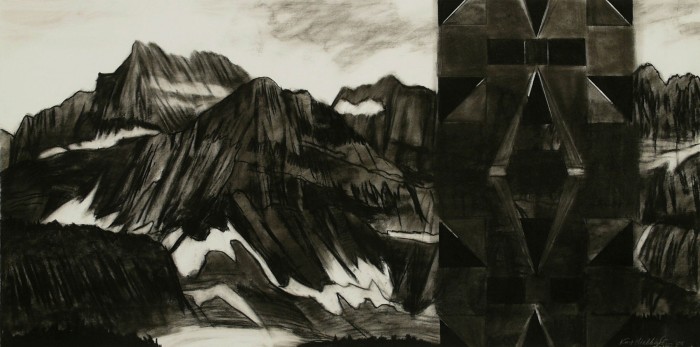
Hales Gallery is showing a selection of WalkingStick’s landscapes which it describes as “sublime vistas of mountains and canyons painted in fluid brushstrokes with bands of traditional Native American patterning”. The earliest piece is from the 1990s and the latest works were made last year.
“Works from 2020 include ‘Buffalo Spring, Snow in the Grand Tetons (Grand Tetons I)’ and ‘The Canyon, Late Day’,” says a spokeswoman for Hales Gallery. “We will be showcasing a magnificent two-panelled painting from 2014, entitled ‘Approaching Yosemite’, as well as an earlier charcoal work from 1997, ‘The Gift’.” (Prices are undisclosed.)
Galleria Continua (San Gimignano, Beijing, Les Moulins, Havana, Rome, São Paulo, Paris)
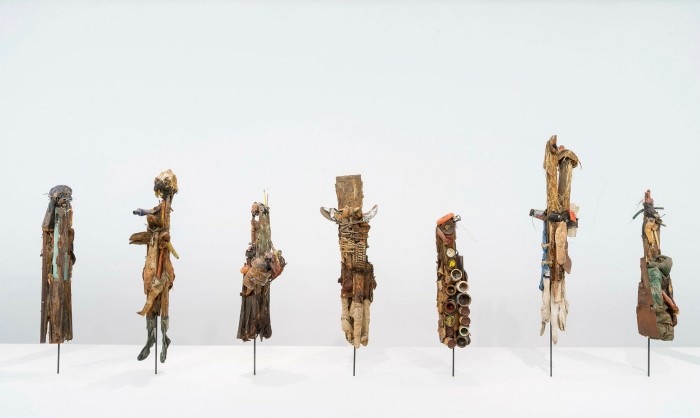
Some works stay indelibly in the mind, especially among the tedium of certain art fairs. Works by the Cameroon-born artist Pascale Marthine Tayou always stand out, notably the imposing, intricate sculptural assemblage “Summer Surprise” at the 1:54 Contemporary African Art Fair in London (2017). But how will his versatile canon and arresting pieces translate online?
Galleria Continua is showing a mini-retrospective of Tayou’s works on the Pioneers platform, underscoring how the artist has unpicked issues around the excesses of contemporary living for the past three decades. The ambitious piece “Human Being” (1990s) — a series of roughly hewn sculptural totems assembled from found objects — is available. A wall piece called “Colourful Stones” (2019), a montage of rocks hung like a painting, is also on offer (prices vary from $45,000 for the sculptures to $500,000 for the installations, the gallery says).
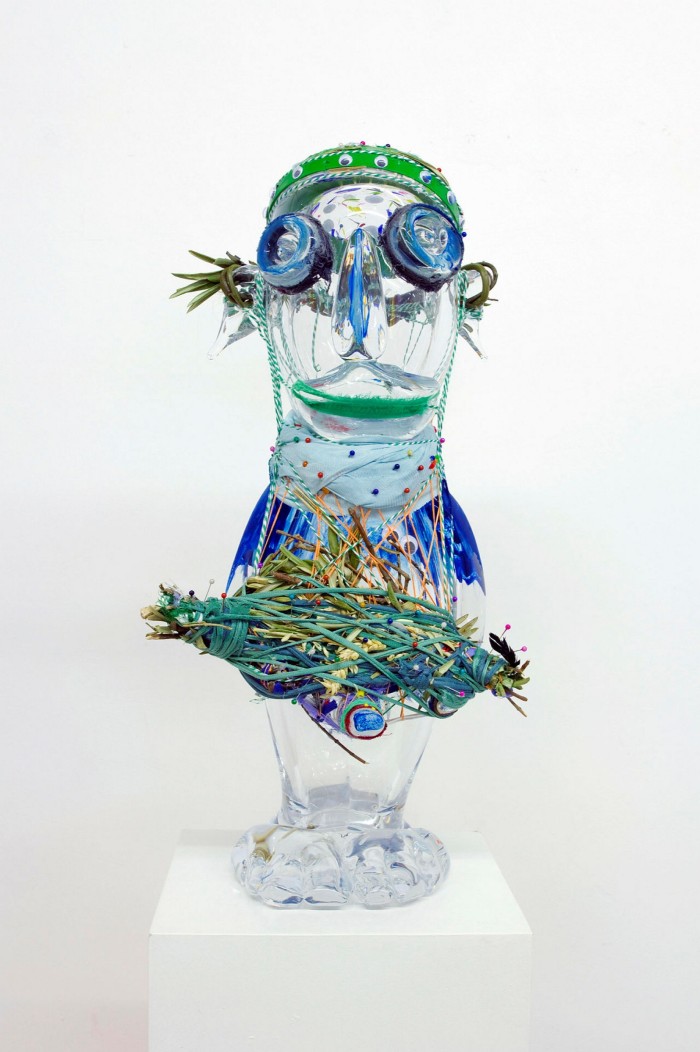
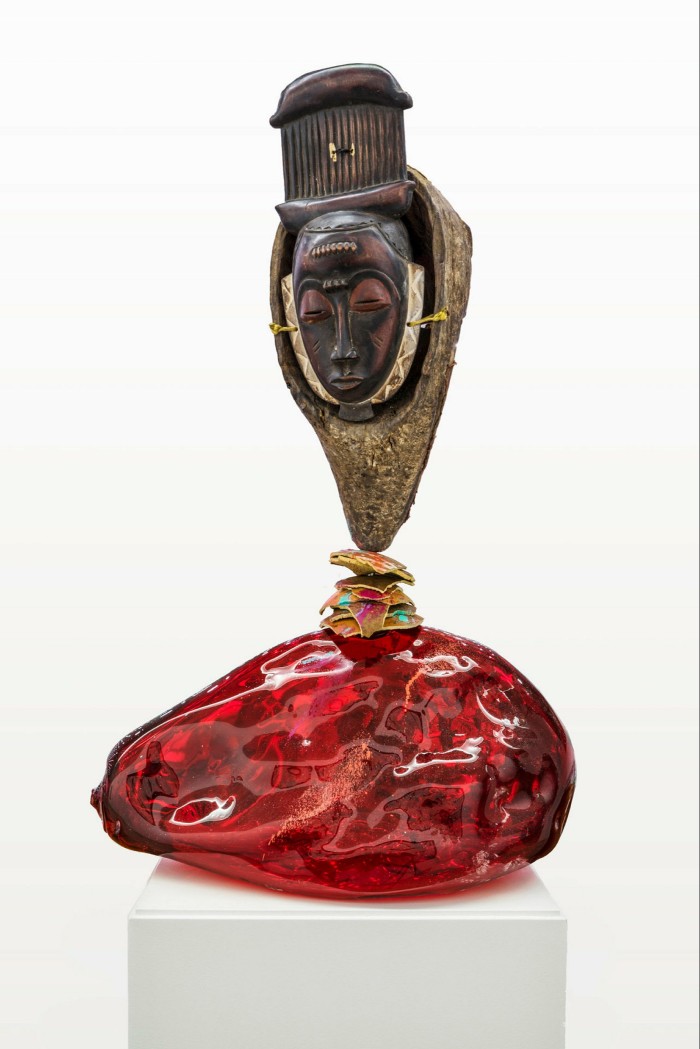
Tayou has been prescient in his exploration of potent themes such as the ambiguous effects of globalisation and mass consumption, says Gemma Rodrigues, curator of the Global Arts of Africa at the Johnson Museum of Art, Cornell University. “His playful, witty, large-scale installations often harbour shrewd critiques of power and capitalism in a global economy, as seen from the vantage of an internationally mobile African with strong ties to the place of his birth,” she says. Rodrigues curated a show of Tayou’s works at the Fowler Museum (UCLA) in 2014.
‘OVR: Pioneers’, March 24-27, artbasel.com/ovr
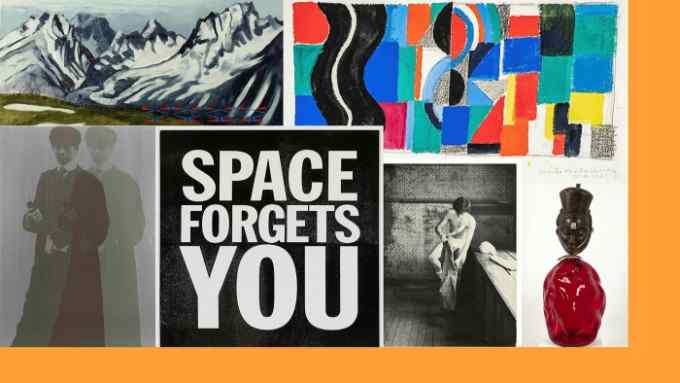
Comments